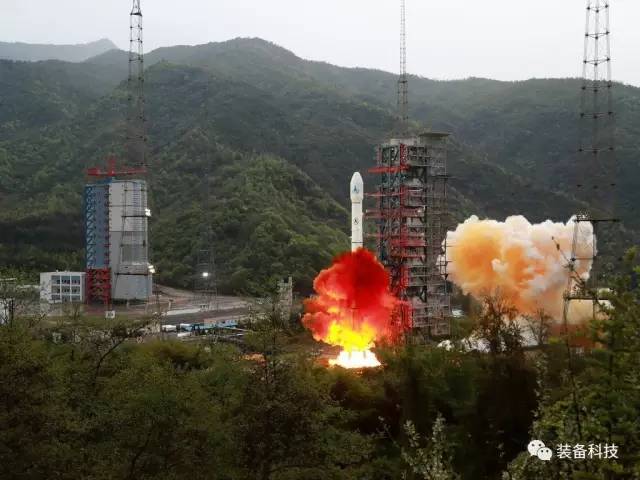
China practice No. 13 satellite launch: aircraft high-speed rail WiFi depends on it
[Observer network comprehensive report] are you still complaining that there is no WiFi on planes, high-speed trains and ocean cruises? This problem is expected to be solved.
At 19:04 tonight, China’s first high-throughput communication satellite — Practice No. 13 satellite was successfully launched at Xichang Satellite Launch Center. This is the broadband satellite with the largest communication capacity in our country so far. It is also the first satellite in China to apply electric propulsion technology. It is also the first star of the full configuration of Dongfanghong No. 3 B platform, with a design life of 15 years, setting a number of “firsts” of domestic communication satellite technology will make China’s communication satellite capability achieve a significant leap.

At 19:04 on April 12, China’s practice 13 satellite was successfully launched by the Long March 3 B carrier rocket at Xichang Satellite Launch Center. This is China’s first high-throughput communication satellite, with a total communication capacity of 20Gbps, exceeding the total capacity of communication satellites developed and launched by China.
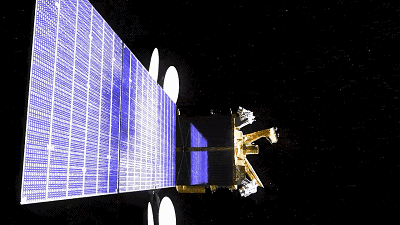
Practice No. 13 high-throughput communication satellite imagination map
How powerful is this string of “the most” and “The first? In practice, the total communication capacity of No. 13 satellite exceeds the total capacity of all communication satellites developed in our country before, and is known as “Super air router”. This satellite is not limited by ground conditions and can provide excellent broadband signal services for remote areas, moving planes, high-speed trains, vehicles, ships, etc.
Through practice No. 13, China will conduct high-speed laser communication experiments on geosynchronous orbit satellites for the first time. Experts said that China may realize barrier-free communication in the sea, sky, grassland and other places within three years.
According to the website of National Defense Science and Technology Bureau, at 19:04 on April 12, China successfully launched the No. 13 satellite with the Long March III B carrier rocket at Xichang Satellite Launch Center. Practice No. 13 satellite is the first high-throughput communication satellite in our country, and it is also a model of successful combination of technology test and demonstration application in our country. It is of great milestone significance for promoting the leapfrog development of communication satellite technology and industry in our country.
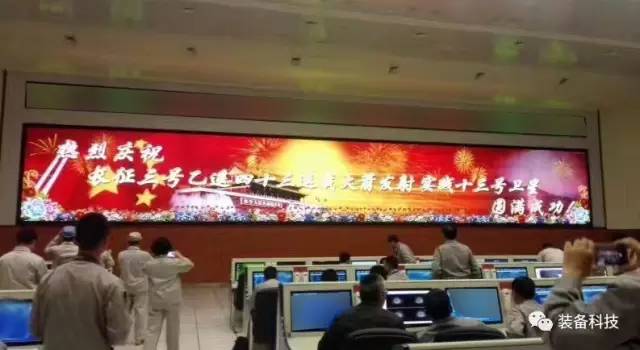
At 19:04 on April 12, China’s practice 13 satellite was successfully launched by the Long March 3 B carrier rocket at Xichang Satellite Launch Center.
As an improved version of Dongfanghong 3 platform, Dongfanghong 3 B platform has a design life of 15 years and is a medium-capacity communication satellite platform developed by China. In practice, satellite 13 is the fully configured first star on this platform.
Practice No. 13 satellite has broken through a series of key technologies that restrict the leapfrog development of China’s space technology, such as electric propulsion, Ka communication load, high orbit laser communication, etc, the function and performance index assessment of Dongfanghong No. 3 B platform will be realized on orbit, the Business test of broadband multimedia satellite communication system in China will be carried out, and the two-way high-speed laser communication technology and application of satellite and Earth will be explored.
Practice No. 13 satellite has created many “firsts” of China’s communication satellites “:
For the first time, the electric propulsion system independently developed in the engineering application of high-orbit satellites has completed the north-south position protection task, greatly improving the payload loading ratio and the on-orbit life of satellites;
For the first time, Ka-band multi-beam broadband communication load has been applied to China’s satellites, with a total communication capacity of 20Gbps, exceeding the total capacity of China’s developed and launched communication satellites;
It is the first time to carry out the two-way laser communication technology test between China’s high-orbit satellite and the ground, with a speed of up to 2.4Gbps;
For the first time in China’s high-orbit long service life communication satellite, 100% of the engineering application of domestic products has changed the situation that related products rely on imports for a long time.
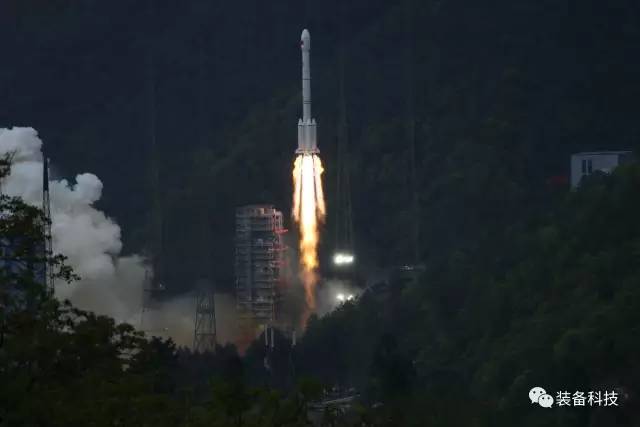
At 19:04 on April 12, China’s practice 13 satellite was successfully launched by the Long March 3 B carrier rocket at Xichang Satellite Launch Center. This is China’s first high-throughput communication satellite, with a total communication capacity of 20Gbps, exceeding the total capacity of communication satellites developed and launched by China.
After completing the test and verification, the No. 13 satellite will be transferred to the Ka-band broadband communication test business and incorporated into the “Zhongxing” satellite series, named Zhongxing No. 16 satellite, making China a Jimei, A few developed countries such as Europe have mastered Ka band broadband communication as an advanced technology, which can provide excellent broadband services for users in areas with underdeveloped communication facilities in China and promote broadband satellite communication in high-speed rail, mobile carriers such as ships and airplanes, as well as applications in the fields of enterprise networking and emergency communication.
Zhao Jian, deputy director of system engineering department of National Defense Science and Technology Bureau, said: “(the successful launch of practice No. 13) is the symbol of China’s satellite communication entering the high-throughput era, in a real sense, it has realized the broadband application of autonomous communication satellites, filled the gap in this field in our country, and will also play a great role in promoting the development of China’s satellite communication industry.”
Practice No. 13 can not be restricted by ground conditions, and by virtue of its characteristics of fast networking, high-speed access and low cost advantages, it can solve the problem of blind spots in information transmission in mountainous areas, deserts, grasslands, oceans and other places, at the same time, seamless “mobile communication” can be realized, and problems such as the inability to access the internet in the aircraft cabin, the interruption of mobile phone signals on high-speed trains, and the fact that the cruise ship becomes an information island after leaving the port can be solved. Liu Fang, chief engineer of No. 13 satellite engineering, said: “The automatic tracking and capture function of airborne, vehicle-mounted or ship-borne terminals can be used for aviation, shipping, passengers on various means of transportation such as railways connect the world and completely improve the online experience.”
When will this goal be achieved? Zhao Jian revealed that after the technological breakthrough of airborne satellite live broadcast, radio and television reception and service system, it really needs to be applied in our civil flights or high-speed trains, there are also problems that need to be solved such as the integration with application services: “Now we have conducted satellite airborne or vehicle-mounted tests, and we have basically broken through the technology. We hope to spend about three years, these products or equipment can be deployed on civil aviation, high-speed rail or ships to drive its application.”
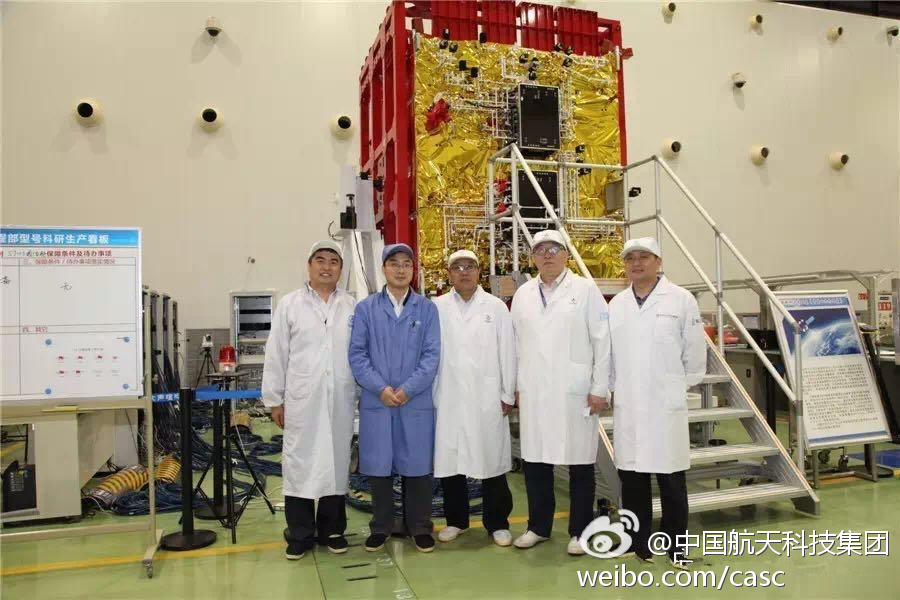
At 19:04 on April 12, China’s practice 13 satellite was successfully launched by the Long March 3 B carrier rocket at Xichang Satellite Launch Center. This is the China Aerospace Science and Technology Corporation scientific research team.
In practice No. 13, electric propulsion technology was used for the first time to carry out the north-south position maintenance mission of the satellite in orbit. The satellite has a life span of 15 years in orbit. Zhou Zhicheng, the commander-in-chief of implementing the No. 13 satellite system, said: “As the north-south position is maintained, the whole star needs to carry more than 3 tons of chemical propellings, that is, 60% of a star is chemical fuel, after using electric propulsion, we can actually maintain the position for 15 years with only 100 kilograms of xenon, which is an epoch-making technology.” It was revealed that the development of this advanced propulsion technology also took 15 years.
The development of China’s communication satellite began in the 1970 s. On April 24, 1970, the first artificial Earth satellite Dongfanghong 1 was successfully launched, creating a new era in the history of Chinese space.
Following the principle of independent independent research and development, aiming at the international advanced level, combining scientific research and practice, four generations of communication satellites have been developed, and they have gone through a journey from exploration to practice, from experiment to practicality, development path from domestic to international. At present, China has formed satellite communications and Technologies service systems such as fixed communication broadcasting, mobile communication, and data relay. There are 16 on-orbit civil (commercial) communication satellites, with a total of 273 Repeater. Beijing, the satellite TT & C and business monitoring networks of Hong Kong and Kashgar are interconnected and backed up to each other, and the satellite telecom ports connecting South Asia, Africa, Europe and America have been built, it has basically formed a global satellite communication service capability. In China, the satellite communication service industry has developed rapidly, with more than 70 million users opened direct-broadcast satellite across the country. Internationally, satellite communication business has expanded to more than 30 countries and regions, and its market influence has greatly increased.
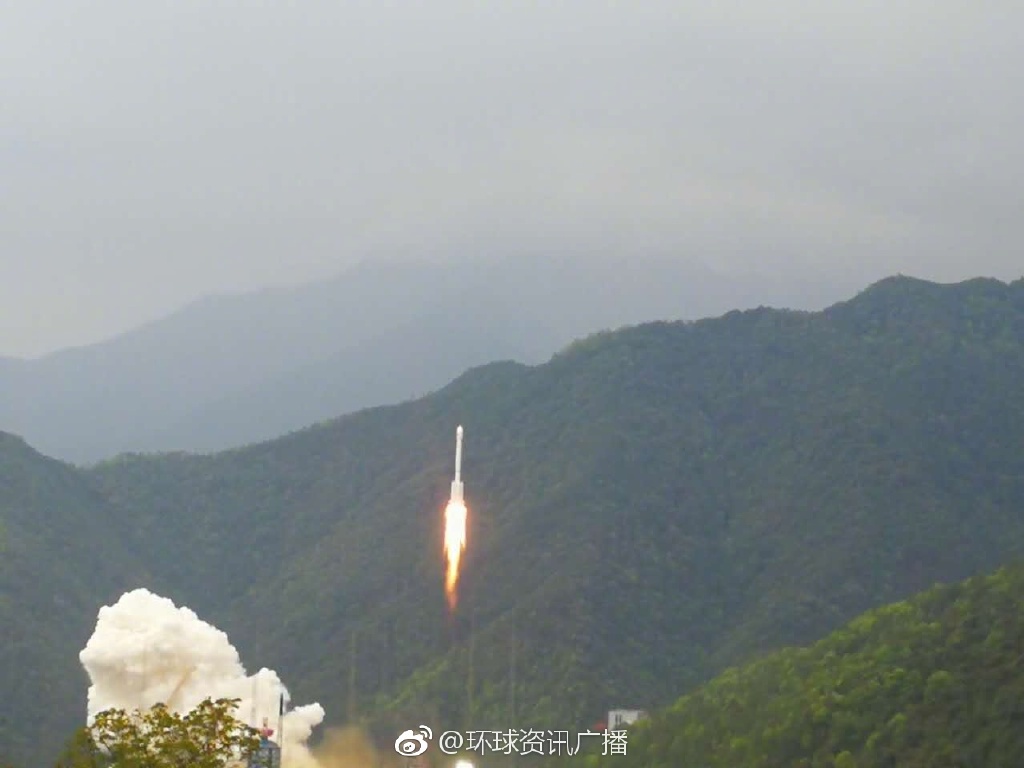
At 19:04 on April 12, China’s practice 13 satellite was successfully launched by the Long March 3 B carrier rocket at Xichang Satellite Launch Center.
Practice No. 13 satellite project is organized and implemented by national defense science and technology bureau. The satellite and launch vehicle are respectively developed by china china aerospace science and technology corporation of china academy of space technology company and china launch vehicle technology research institute. The ground measurement and control system is under the responsibility of xi’an satellite measurement and control center, and the operation control and test application system is under the responsibility of china weitong group co., ltd. The launch mission was the 246th launch of the Long March series of launch vehicles.
Extended reading:
Opening a new era of China’s communication satellite
— Experts reveal China’s first high-throughput satellite practice No. 13
On the evening of the 12th, practice No. 13 satellite was launched at Xichang Satellite Launch Center, which marked that China’s communication satellite industry was moving towards a high-throughput era.
As the satellite with the largest communication capacity in China so far, what new technologies and skills do the No. 13 satellite have in practice? How does it meet people’s demand for broadband communication everywhere? The reporter of Liberation Army Daily went to Xichang satellite launch center to interview recently and got answers about expert power.
Communication “broadband” star: ten-fold increase in transmission capacity helps “mobile communication”
Practice No. 13 satellite is the first high-throughput communication satellite in our country. Its communication capacity is more than that of all communication satellites developed in our country before.
Communication capacity is a concept to measure information transmission capability. The larger the flux of communication satellites, the stronger the information transmission capability. Experts said that in the past, a domestic satellite had a flux of about 2Gbps, mainly serving backbone communications such as broadcasting, banking and petroleum systems, while in practice, No. 13 satellite adopted Ka-band multi-beam broadband communication system, with a total capacity of 20Gbps, the transmission capacity has been improved by an order of magnitude.
Liu Fang, the chief engineer of No. 13 satellite engineering in the Fifth Academy of the company in China Aerospace Science and Technology Corporation, said that No. 13 satellite in practice can cover most of the land and offshore waters of China except the northwest and northeast, one of its important services is to provide high-speed “mobile communication” services.
“Mobile Communication” refers to the satellite communication guarantee of vehicles, ships, planes and other mobile carriers during the movement. At present, on high-speed vehicles such as airplanes, high-speed trains, cruise ships, etc., the demand for passengers to surf the Internet anytime and anywhere is not well met.
“Through seamless multi-beam switching and automatic tracking and capture function of airborne, vehicle-mounted or ship-borne terminals, the No. 13 satellite can be technically used for aviation, shipping, passengers on various means of transportation such as railways connect the world and improve the online experience.” Liu Fang said.
China Aerospace Science and Technology Corporation Tang Zuoxiang, chief engineer and chief commander of the No. 13 satellite operation control and test application system of the company’s fifth Academy, said that the No. 13 satellite communication capacity is large, high-definition video can be transmitted, and the terminal is small, it is easy to carry and use, and can establish voice, data and video transmission with satellites at any time. It can provide emergency communication services for outdoor tourists and affected people, and transmit the situation on the way or in the disaster area as soon as possible.
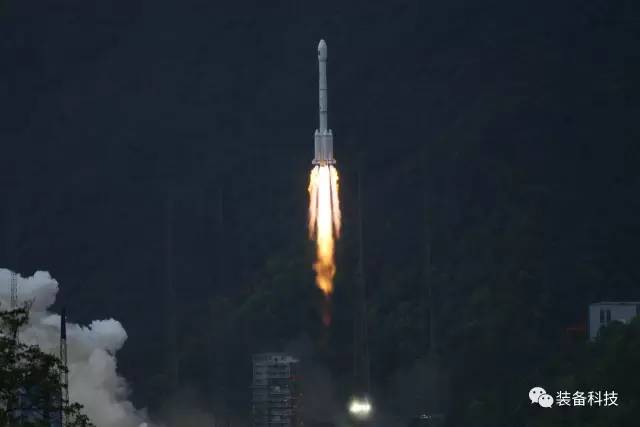
At 19:04 on April 12, China’s practice 13 satellite was successfully launched by the Long March 3 B carrier rocket at Xichang Satellite Launch Center. This is China’s first high-throughput communication satellite, with a total communication capacity of 20Gbps, exceeding the total capacity of communication satellites developed and launched by China.
Use electricity to “lose weight”: let satellites travel light for a longer life”
Unlike using chemical fuel as propellant, practice No. 13 satellite is the first satellite in China that uses electric propulsion.
In China Aerospace Science and Technology Corporation, Zhou Zicheng, the chief commander of the No. 13 satellite system in the Fifth Academy of the company, told the reporter that the efficiency of electric propulsion was 10 times higher than that of conventional chemical propulsion. It can prolong the life of satellites and greatly reduce the launch weight, it is an important means to improve satellite performance and is gradually becoming the mainstream of satellite propulsion systems around the world.
“60% of the weight of a satellite is chemical propellant, and the satellite weighing 5 tons adopts conventional chemical propulsion. If it is changed into electric propulsion, the weight can be reduced by 2.5 tons.” Zhou Zhicheng said that the practice of satellite No. 13 only requires more than 100 kilograms of xenon, which can ensure the north-south position of the satellite in orbit for 15 years.
In practice, the electric propulsion system of No. 13 satellite adopts xenon ion thruster, which is a high voltage treatment of the electric energy converted from the satellite solar panel, and uses a voltage of thousands of volts to electrically separate xenon gas in vacuum, accelerate and upgrade the injection to obtain the thrust to adjust the satellite orbit.
The principle is simple and difficult to practice. According to experts, both the hall electric propulsion technology in Russia and Europe and the ion electric propulsion technology in the United States suffered setbacks when they were initially applied to satellites.
In order to bite down this “hard bone”, Chinese scientists have conducted 151 large-scale experiments on the ground, 12000 hours of simulation experiments, and after 15 years of difficult exploration, finally, the electric propulsion technology was applied to the No. 13 satellite in practice.
A number of “pioneering”: opening a new era of China’s communication satellite
No matter in terms of technology or application, the practice of No. 13 satellite has set many “firsts” in the field of domestic high-orbit satellites: it is the first time to carry a laser communication system on China’s high-orbit satellites; for the first time in China’s high-orbit long service life communication satellite, 100% engineering application of domestic products; For the first time, the combination of technology test and demonstration application on China’s satellite not only meets the purpose of new technology on-orbit test, it also meets the requirements of load demonstration application and improves the comprehensive benefits of the project.
Meanwhile, practice No. 13 satellite is the first star of Dongfanghong No. 3 B platform. This platform is the latest generation of medium-capacity communication satellite platform developed by our country, which will greatly improve the capability of domestic satellite platforms.
“Although compared with foreign 80Gbps and 100Gbps communication satellites, the communication capacity of the No. 13 satellite is not much.” Zhou Zhicheng said, but this is a Test star. Because he has undertaken other test tasks at the same time, he only achieves the communication capacity of 20Gbps. Once the technology breaks through, the subsequent development of 100Gbps, and even larger capacity of communication satellites are just around the corner.
Zhao Jian, deputy director of the system engineering department of the National Defense Science and Technology Bureau, said that the practice of the No. 13 satellite opened the high-throughput era of satellite communication in China, and truly realized the broadband application of autonomous communication satellites, filling the gap in this field will greatly promote the development of China’s satellite communication industry.
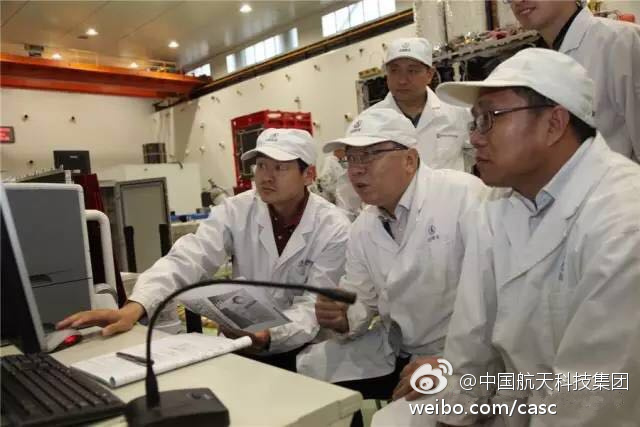
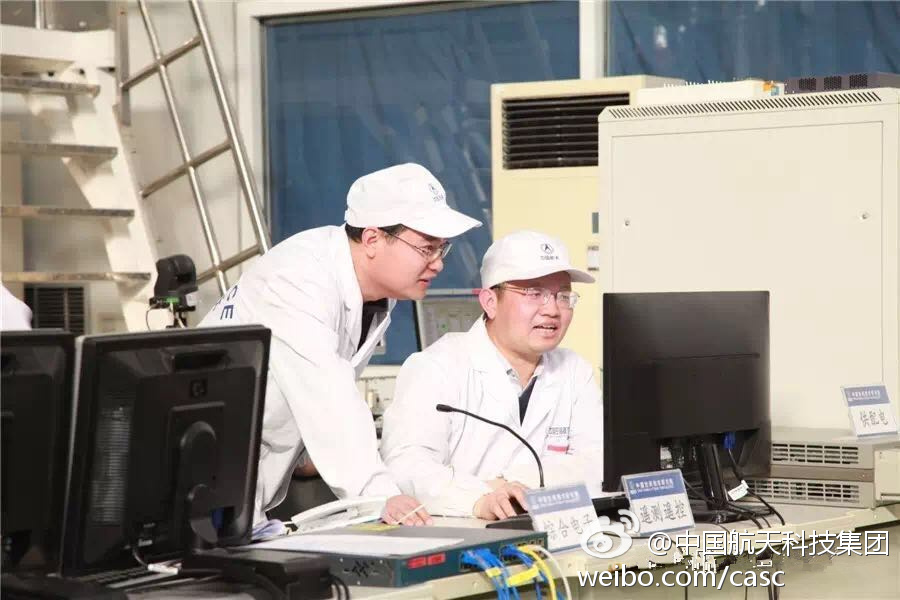
At 19:04 on April 12, China’s practice 13 satellite was successfully launched by the Long March 3 B carrier rocket at Xichang Satellite Launch Center. This is the China Aerospace Science and Technology Corporation scientific research team.
7530
[observer network comprehensive report] are you still complaining that there is no WiFi on planes, high-speed trains and ocean cruises? This problem is expected to be solved. At 19:04 tonight, China’s first high-throughput communication satellite-practice No. 13 satellite was launched in Xichang satellite.